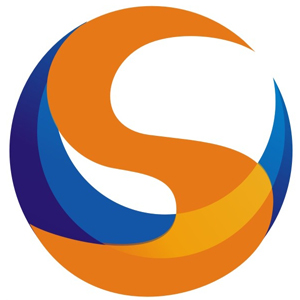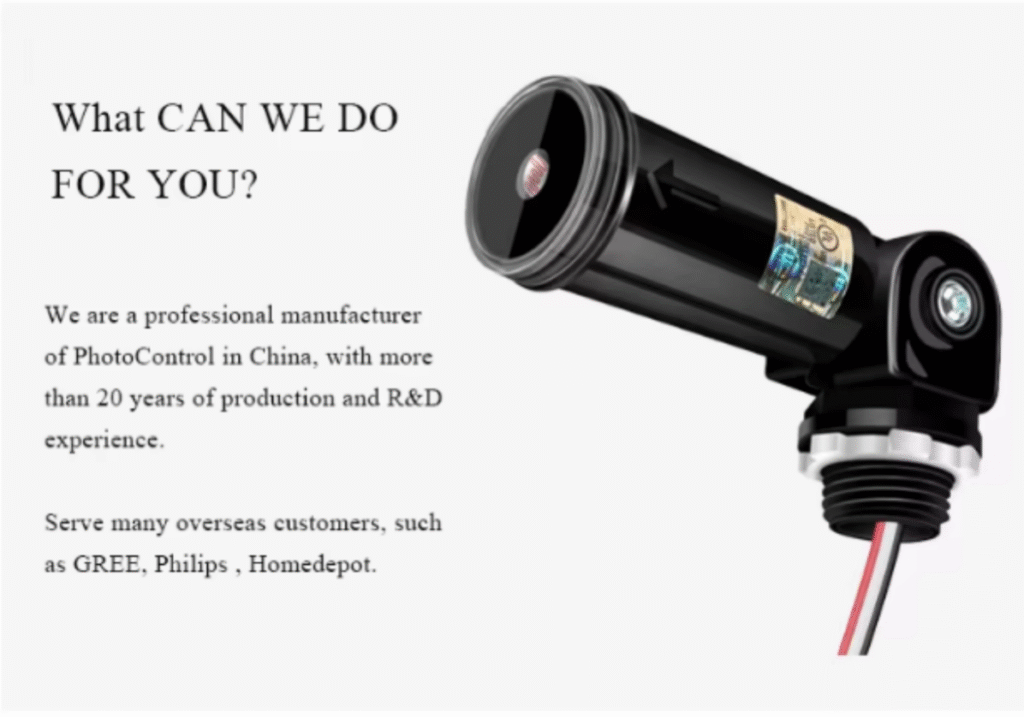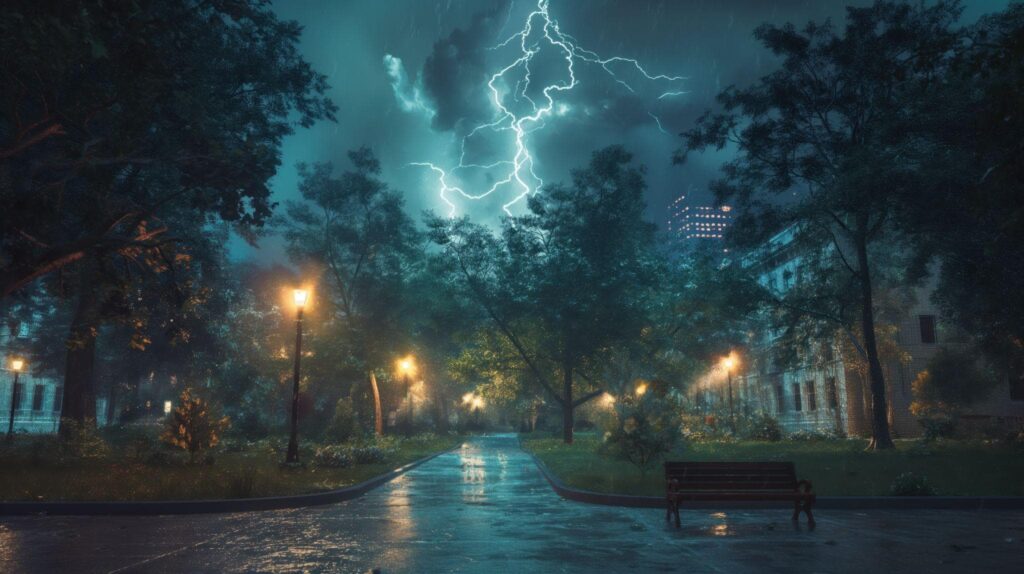Schema
- Introduzione
- Perché i campi sportivi hanno bisogno Fotosensori?
- Quali sono i principali vantaggi di Interruttori fotocellule nell'illuminazione sportiva?
- Dove sono Sensori fotoelettrici Più utile nell'illuminazione dei campi sportivi?
- Quali specifiche tecniche dovresti cercare in una fotocellula per l'illuminazione sportiva?
- Come fare Sensori fotocellula di luce Migliorare i sistemi di illuminazione intelligenti?
- Qual è il futuro di Regolatori di illuminazione stradale in impianti sportivi intelligenti?
- Parole finali
I campi sportivi richiedono un'illuminazione affidabile per garantire prestazioni ed efficienza energetica. Ma come possono questi sistemi funzionare senza problemi senza un controllo manuale costante?
La risposta sta in fotocontrolli. UN interruttore sensore luce rileva i livelli di luce naturale e gestisce automaticamente l'accensione e lo spegnimento delle luci. Questo li rende essenziali per gli sport moderni. controllo dell'illuminazioneDai piccoli campi scolastici agli stadi professionistici, le fotocellule garantiscono operazioni intelligenti e sostenibili.
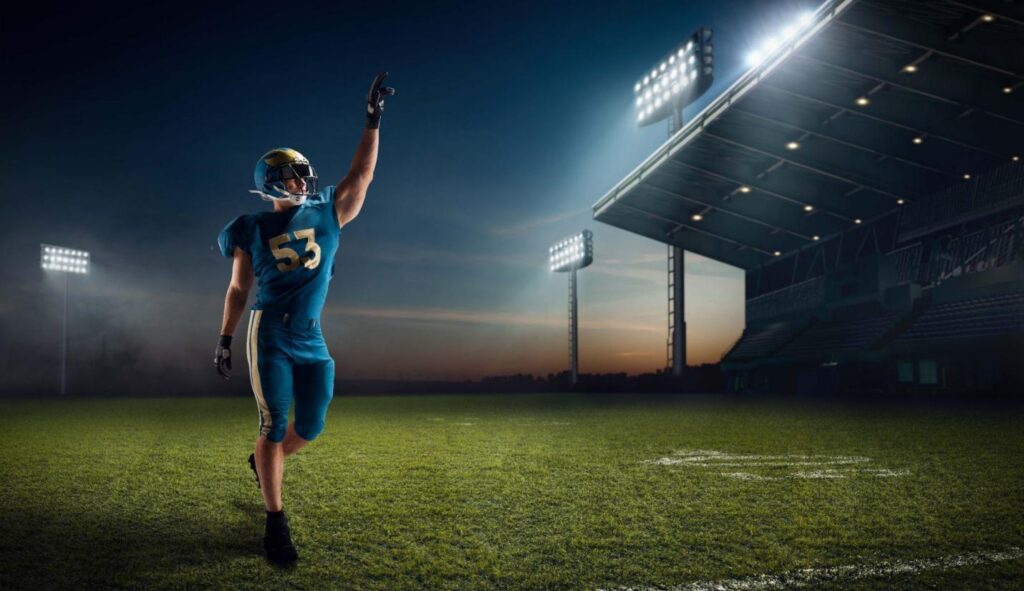
Perché i campi sportivi hanno bisogno Fotosensori?
Gli impianti sportivi moderni devono trovare il giusto equilibrio tra visibilità e funzionamento efficiente. Una scarsa illuminazione può causare:
- Errori del giocatore
- Incidenti degli spettatori
- Rischi per la sicurezza
Infatti, gli stadi professionali necessitano di un'illuminazione istantanea e di alta qualità per rispettare i calendari delle partite e gli standard di trasmissione.
IL sensore fotoelettrico Fungono da occhi di un sistema di illuminazione esterna. Misurano costantemente la luce ambientale. Quando la luce scende al di sotto di una soglia, segnalano agli apparecchi di accendersi; quando torna la luce del giorno, spengono le luci.
Il ruolo di Sensori fotoelettrici nell'automazione dell'illuminazione
- Funzionano come regolatori dal tramonto all'alba, sostituendo la commutazione manuale o temporizzata con il rilevamento della luce in tempo reale.
- Si integrano perfettamente con i sistemi di illuminazione intelligente, costituendo la base di partenza per il controllo di zona o per strategie di illuminazione adattiva.
- Riducono la dipendenza dai timer programmati che possono non essere allineati con gli orari variabili dell'alba e del tramonto.
Quali sono i principali vantaggi di Interruttori fotocellule nell'illuminazione sportiva?
Ecco una rapida occhiata ai 5 principali vantaggi dell'utilizzo sensori fotocellule di luce nell'illuminazione dei campi sportivi:
Automazione intelligente
IL interruttore sensore luce esterna Rileva in tempo reale le variazioni della luce diurna. Attiva l'accensione e lo spegnimento degli apparecchi senza intervento umano. Questo elimina gli errori di programmazione e garantisce che le luci funzionino esattamente quando necessario.
Risparmio energetico
Spegnendo le luci durante i periodi di maggiore luminosità, le fotocellule riducono drasticamente lo spreco di energia. Infatti, controlli di illuminazione (incluse le fotocellule) possono ridurre il consumo di energia fino a a 30–40 % nelle applicazioni in aree esterne.
Maggiore sicurezza
I campi sportivi devono essere ben illuminati prima che scenda completamente il buio. Sensori fotoelettrici garantire una transizione fluida. Ciò elimina i blackout improvvisi e protegge atleti, personale e spettatori.
Bassa manutenzione
Poiché l'illuminazione si accende e si spegne automaticamente, la supervisione manuale è ridotta. Inoltre, il minor numero di ore di funzionamento prolunga la durata dei LED, riducendo lo stress termico ed elettrico.
Flessibilità di integrazione
Moderno interruttori fotocellula Possono interfacciarsi con DMX, timer, sistemi di automazione degli edifici e piattaforme IoT. Ciò consente il controllo intelligente delle scene (ad esempio, per allenamento, competizione o modalità standby). Poiché fungono da semplici "trigger del livello di luminosità", migliorano l'automazione dell'illuminazione a LED senza dover effettuare ricablaggi complessi.
Dove sono Sensori fotoelettrici Più utile nell'illuminazione dei campi sportivi?
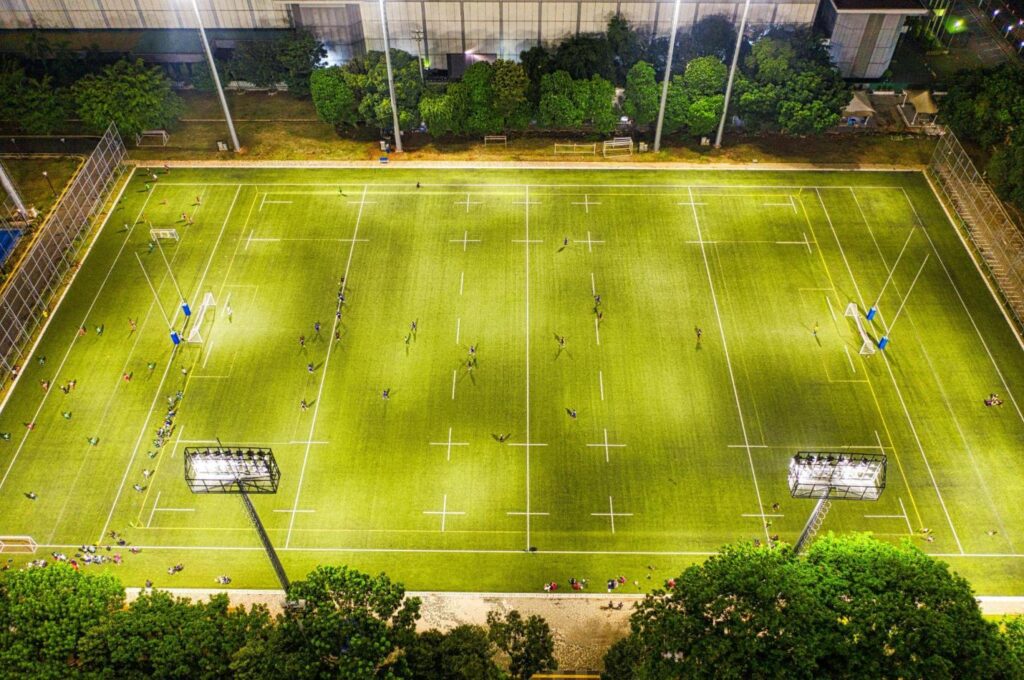
Luci LED per esterni con fotocellule brillano in vari contesti in cui l'illuminazione esterna deve adattarsi automaticamente. Di seguito sono riportati i tre ambiti principali in cui il loro impatto è significativo.
Campi scolastici
I campi sportivi scolastici sono soggetti a cambiamenti stagionali: gli orari dell'alba e del tramonto cambiano. Le fotocellule regolano gli orari di illuminazione senza bisogno di reset manuali. Garantiscono che gli allenamenti si svolgano sempre con un'illuminazione sicura. Quando gli studenti escono tardi nelle giornate uggiose, il sistema attiva comunque le luci prima del buio.
Centri sportivi comunitari
Questi locali sono spesso aperti per molte ore e offrono molteplici attività. Sensori di illuminazione stradale evitare sprechi di luce durante il giorno quando è sufficiente la luce naturale.
Abbinati ai faretti a LED, riducono le bollette energetiche dell'intero complesso. È necessaria una minore supervisione manuale, semplificando la manutenzione per i gestori della comunità.
Stadi professionali
A questo livello, l'illuminazione non è solo una questione di visibilità: è una questione di spettacolo, tempismo e controllo di precisione. Negli stadi:
- Le fotocellule forniscono dati di base sulla luce ambientale ai sistemi intelligenti.
- I sistemi di controllo dell'illuminazione che utilizzano DMX regolano le scene (ad esempio, riscaldamento, gioco, chiusura) in base alla programmazione e alla luce rilevata.
- Si integrano nelle piattaforme IoT, consentendo effetti di illuminazione dinamici e controllo delle zone (tribune, campo, atri).
Quali specifiche tecniche dovresti cercare in una fotocellula per l'illuminazione sportiva?
Ecco una tabella sintetica delle specifiche consigliate per le fotocellule di livello sportivo:
| Parametro | Valore suggerito / Intervallo |
| Sensibilità (accensione) | da 10 a 20 lux |
| Sensibilità (Disattiva) | da 30 a 50 lux |
| Protezione (grado IP) | IP65 o superiore (resistente a polvere/acqua) |
| Tipo di controllo | Compatibile con presa cablata, twist-lock o Zhaga |
| Gamma di tensione | 120–277 V CA (universale) |
| Funzionalità extra | Ritardo di spegnimento, protezione da sovratensioni, anti-sfarfallio |
Note pratiche per la scelta del modello giusto
- Soglie dei sensori: Utilizzare valori di lux di accensione più bassi nelle regioni con cielo spesso coperto, in modo che le luci non aspettino troppo a lungo per accendersi.
- Grado di protezione IP e durata: In climi umidi o polverosi, scegli modelli con grado di protezione IP65+ per resistere all'ingresso di agenti atmosferici. Molte fotocellule da esterno hanno un grado di protezione IP65.
- Interfaccia di controllo: Se il tuo sistema utilizza moduli Zhaga (comuni nei sistemi LED avanzati), scegli una fotocellula compatibile con Zhaga da collegare direttamente.
- Adattamento della tensione: Verificare sempre che la tensione nominale della fotocellula corrisponda al circuito di illuminazione. Eventuali discrepanze possono causare guasti o malfunzionamenti.
- Protezioni extra: Lo spegnimento ritardato aiuta a evitare l'attivazione/disattivazione rapida in condizioni di luce transitoria (ad esempio, nuvole, fari di passaggio). La protezione da sovratensione protegge dai picchi di tensione.
Come fare Sensori fotocellula di luce Migliorare i sistemi di illuminazione intelligenti?
Le fotocellule fungono da nodi sensori all'interno di un più ampio sistema di illuminazione intelligente. Non si limitano ad accendere/spegnere le luci, ma forniscono dati continui sulla luce ambientale a sistemi di controllo di livello superiore.
Le moderne “fotocellule intelligenti” garantiscono una risposta più rapida e riducono i falsi allarmi grazie ad algoritmi di filtraggio e rilevamento migliorati.
Abilitazione del controllo dell'illuminazione adattiva e a zone
Sensore di luce Gli input consentono ai sistemi di illuminazione di decidere quali zone necessitano di luce e quanta. Ad esempio, attenuando l'intensità luminosa delle zone periferiche, mantenendo al contempo luminosa l'area di gioco.
Negli stadi, le fotocellule aiutano ad attivare diverse scene (allenamento, partita, spegnimento) in base alla luce ambientale e alla programmazione. Alcuni fotocontrolli supportano la regolazione dell'intensità luminosa, non solo l'accensione/spegnimento, per consentire transizioni più fluide.
Fornitura di dati per algoritmi di illuminazione
Le piattaforme di controllo intelligenti utilizzano le letture della luce ambientale provenienti dal interruttore sensore luce come input di base. Gli algoritmi confrontano tali dati con i livelli di lux target per decidere se ridurre, mantenere o aumentare la produzione.
Nei sistemi che sfruttano la luce naturale, i dati delle fotocellule garantiscono che l'illuminazione elettrica integri la luce naturale.
Utilizzo di rilevatori di movimento, infrarossi e telecomandi
Le fotocellule spesso sono abbinate a sensori di movimento (PIR/IR). In questo modo, l'illuminazione rimane spenta durante il giorno e non viene rilevato alcun movimento.
Nei nodi integrati, un singolo dispositivo combina PIR + fotocellula + controllo di rete per gestire la regolazione dell'intensità luminosa, la programmazione e gli override remoti. I controller remoti o le dashboard cloud possono ignorare o regolare i setpoint, utilizzando i dati della fotocellula come base di riferimento.
Ecco un confronto tra i tipi di sensori utilizzati con le fotocellule in un impianto sportivo.
| Tipo di sensore | Funzione | Vantaggi nel controllo dell'illuminazione | Esempio di utilizzo in impianti sportivi |
| Sensore di movimento | Rileva il movimento | Attiva le luci solo quando necessario | Passerelle del campo di allenamento |
| Sensore IR | Rileva il calore corporeo | Migliora la precisione rispetto al solo movimento | Zone giocatori, aree salotto |
| Sensore di temperatura | Monitora i cambiamenti di calore | Supporta l'illuminazione adattiva basata sul clima | Aree coperte con HVAC |
| Sensore acustico | Rileva il rumore della folla | Attiva effetti ambientali | Illuminazione per la celebrazione del gol |
Qual è il futuro di Regolatori di illuminazione stradale in impianti sportivi intelligenti?
Le fotocellule si stanno evolvendo: non saranno più semplici rilevatori di luce. Nei futuri luoghi intelligenti, funzioneranno come hub di sensori avanzati e connessi, in grado di coordinare più input per un controllo più sofisticato.
Integrazione multisensore
Sensori di luce coesisteranno e si fonderanno con sensori di movimento, temperatura e infrarossi. Invece di attivarsi solo con la luce, i sistemi decideranno utilizzando segnali multipli (ad esempio, presenza + luce + calore ambientale). I sensori di nuova generazione combinano già questa fusione per fornire scene di illuminazione adattive.
Miglioramenti della precisione nel rilevamento
Aspettatevi soglie di sensibilità più precise e tempi di risposta più rapidi. Filtraggi e algoritmi avanzati ridurranno i falsi positivi dovuti a variazioni transitorie della luce (nuvole, fari delle auto). Questi miglioramenti contribuiscono a rendere più fluidi i sistemi di illuminazione.
Ecco i parametri prestazionali delle fotocellule attuali e di prossima generazione.
| Parametro | Gamma attuale | Capacità emergenti | Impatto |
| Sensibilità (lusso) | 10–50 lux | 1–5 lux | Rileva sottili cambiamenti di luce |
| Tempo di risposta | 1–2 secondi | <200 ms | Regolazioni istantanee |
| Tasso di falsi trigger | 8–12% | <2% | Funzionamento affidabile |
| Durata | 5–7 anni | 10–12 anni | Minore manutenzione |
Compatibilità IoT
Fotocellule incorporerà moduli di comunicazione, ovvero LoRa, ZigBee, NB-IoT, che consentono:
- Monitoraggio remoto
- Configurazione
- Aggiornamenti firmware over-the-air
Long-Join JL-245CZ, ad esempio, supporta più protocolli per un'integrazione perfetta. Il prodotto è inoltre certificato a livello internazionale da ISO, CE, UL, E Direttiva RoHS.
Framework di illuminazione che utilizzano LoRaWAN hanno già dimostrato come i controlli possano far risparmiare energia su larga scala.
Ecco una tabella che illustra alcuni dei protocolli di comunicazione più comunemente utilizzati, insieme alla loro portata, al consumo energetico e alle applicazioni adatte.

| Protocollo | Allineare | Consumo energetico | Applicazione adatta |
| ZigBee | 10–100 metri | Basso | Stadi al coperto |
| LoRaWAN | 2–5 km urbani, 15+ km rurali | Molto basso | Campi all'aperto |
| NB-IoT | A livello nazionale | Moderare | Illuminazione sportiva in tutta la città |
| Wi-Fi 6 | <100 metri | Alto | Ambienti ad alta densità di dati |
Progettazione di fotocellule alimentate ad energia solare
Le fotocellule possono ricavare energia direttamente dai moduli solari o dai circuiti di recupero energetico. Questo le rende autosufficienti. Nei campi sportivi isolati o isolati, i sistemi di illuminazione solare sfruttano già sistemi di controllo autonomi.
Utilizzando il fotovoltaico a perovskite o componenti elettronici a bassissimo consumo, le fotocellule del futuro potrebbero funzionare senza cablaggio esterno.
Parole finali
Gli impianti sportivi intelligenti richiedono un'illuminazione precisa, adattabile ed efficiente dal punto di vista energetico. Le fotocellule rendono tutto questo possibile consentendo un controllo intelligente basato su sensori. Per prestazioni affidabili, i fotocontrollori intelligenti LongJoin di Chi-Swear sono una scelta affidabile. La loro durata e qualità li rendono un partner affidabile per progetti di illuminazione orientati al futuro.
Link esterni
- https://www.energystar.gov/sites/default/files/asset/document/Outdoor%20Area%20Lighting%20Papamichael.pdf
- https://en.wikipedia.org/wiki/Lux
- https://www.iso.org/home.html
- https://single-market-economy.ec.europa.eu/single-market/goods/ce-marking_en
- https://www.ul.com/solutions
- https://en.wikipedia.org/wiki/RoHS
- https://link.springer.com/article/10.1007/s43926-025-00163-z
- https://en.wikipedia.org/wiki/Zigbee
- https://lora-alliance.org/
- https://en.wikipedia.org/wiki/Narrowband_IoT
